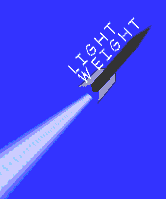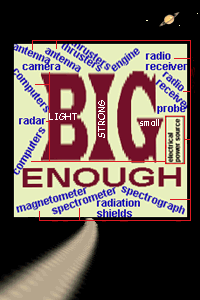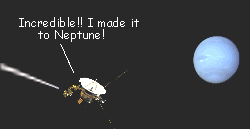 |
| Once you've built the spacecraft just right, you then need some kind of fuel to fly it all the way out to Saturn. Getting way out there takes a lot of energy! |
 |
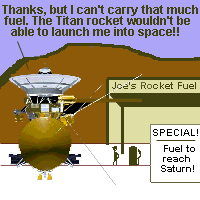 | Can Cassini carry enough rocket fuel for the trip? Cassini must take some, but can't take enough to power itself the whole way. The fuel it can carry needs to be reserved for adjusting its course and getting into orbit at Saturn. |
 |
| How about solar panels? First of all, solar panels could only provide electrical power, not propulsion, and even then, they would work effectively only as far as Mars. Past that, the sun becomes too dim to power a spacecraft like Cassini. | 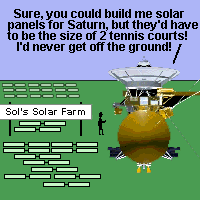 |
 |
What can we use then?
What we've been using for decades -- |
 |
| Planet Power! |
 |
 |
 |
| Pioneer, Voyager, Galileo, and many other spacecraft increased their speed by flying alongside a planet on the way and getting a "gravity assist." That's when a spacecraft uses a planet's gravity and orbital energy to swing itself faster and on to a farther planet. |
 |

| Cassini will get two gravity assists from Venus, one from Earth, and one from Jupiter. Only then will it be fast enough to make it to Saturn. |
 |
| This long, windy route will add a billion miles to Cassini's path, but the planetary boosts will provide energy equivalent to 75 tons of rocket fuel! |
 |
 |
 |
| Once you've built your Saturn-bound spacecraft and mapped out a path which gives it the power to fly all the way out there, what next? |
 |
| You give it a good send-off, of course! |
 |
| Once Cassini was all ready and about to travel to Cape Canaveral for launch, everyone who worked on the spacecraft came to visit it one more time... |
 |
 |
 |
| With their families and friends, workers at the Jet Propulsion Laboratory in Pasadena, California, all waited in line to look one last time at the amazing machine which would "see" Saturn for us! |
 |
| One engineer brought her new baby along and thought about how
her child would just be starting school when Cassini arrived at Saturn. |
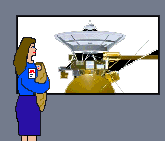 |
 |
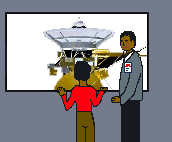 | A scientist and his preteen son talked about how the son would be able to vote by the time the spacecraft makes its first pass by the huge rings! |
 |
Cassini will arrive at Saturn in July 2004.
What will you be doing then?
|


